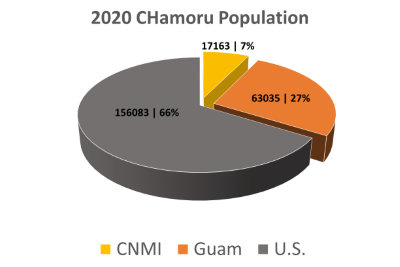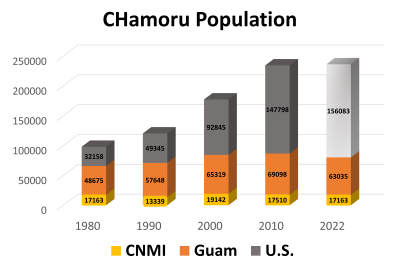Home
Bitiranu Gi Geran Vietnam
- Details
- Written by: Bernard Punzalan
(Veteran's of the Vietnam War Project)
The primary goal of that project is to record the unique experiences of CHamoru veterans of the Vietnam War from Guam; their stories; their perspectives; their experiences and their feelings about the conflict, its effect on their lives and the island of Guam. These interviews were conducted in CHamoru and English with the emphasis on CHamoru in order to elicit unique perspectives as well as assist in the study of the language of CHamoru.
To listen to the voices and stories of these veteran's click on this link: http://www.bitiranu.org
Revisiting History: The Punzalan Clan from Guam
- Details
- Written by: Bernard Punzalan

Yesterday, I was fortunate to register and join in on Jillette Leon Guerrero’s presentation, “The Case of the Padre Palomo District & Involuntary Dislocation after World War II.” I love it when I learn more of my family’s history. It is the impetus for this write-up to combine what I just learned and what I have learned in the past about my genealogy.
My namesake Tåta, Bernardo del Mundo Punzalan, enlisted in the U.S. Navy on September 23, 1916. A passenger manifest, dated March 18, 1917, lists Mess Attendant Third Class “Punzalan B. D.,” aboard the US Transport “Thomas,” departing Manila, Philippines to San Francisco, California. He was subsequently assigned to Guam and married my biological grandmother Antonia Pereda Anderson (manggåfan CHe’) on August 19, 1920. Together, they had 11 children; however, two boys (Donato and Jesus) died as children. My father and his siblings are the first generation of the Punzalan Clan on Guam.
Because they were married after the 1920 census was conducted, our Punzalan Clan doesn’t appear as a family unit until the 1930 census. However, in the 1930 census, Tåta was not recorded with his family living in the Padre Palomo area. He was recorded seperately with military personnel. Tåta was finally discharged and retired from the U.S. Navy on October 16, 1940 after a little over 33 years of service.
It was the 1940 Census where I first learned that my grandfather owned some type of billard business, because his occupation on the census listed him as a “Pool owner.” Our Punzalan clan owned a barbershop and within the shop, Tåta also had at least one pool table. His business was on lot number 2044-NEW, Padre Jose Palomo District, Agana, Guam and where the family resided as well. However, in the 1940 census, the lot number is incorrectly enumerated as Lot 2404, an obvious inversion on a couple of the digits.
It’s not yet clear when Tåta first acquired lot number 2044-NEW, but it was subsequently ceased by the US Government in the 1950s, by way of a declaration of taking. In reviewing the old map and comparing with a current map, the former Lot 2044-New is near the middle of where Route 1 and the beginning of Route 8 intersect, which would confirm one of my sister’s recollections. There is a very likely chance that whatever structures may have existed on Lot 2044-NEW before WWII was demolished by the US bombardment attacks to re-occupy the island. That was the overall fate of Agana and those that once resided there.
Tåta and his family also owned a few more properties that were within the Tiyan, Barrigada area, known as lot numbers 2066, 2066-1 and 2066-2. Lots 2066-1 and 2066-2 were also taken over by the U.S. Navy after the war. Those lots would later become a part of the former Naval Air Station, Officer Quarters, Bachelor Officer Quarters, and the swimming pool. Since then, a portion of one lot was returned to the Government of Guam, who in-turn returned ownership to the Punzalan Clan estate, in accordance with its original landowners return policy. However, it is doubtful that the Government of Guam will ever return the remaining parts of the lots once owned by the Punzalan Clan.
Because of the declaration of taking on lot 2044-NEW, our family was forced to relocate and resettle to a new residence. They moved to what was left of lot 2066, which to this very day remains several of the Punzalan clan descendants, a dental practice clinic and some non-family residents.
I would be curious if any of my family may have any pre-war photos that they would like to share to continue enhancing this storyline.
Thanks Jillette for rekindling this piece of our family history.
2020 CHamoru Population (Preliminary)
- Details
- Written by: Bernard Punzalan


I recently reviewed the CHamoru population data for 2020 available at the U.S. Census Bureau's website. I did expect a population growth in the U.S., but thought it would be much higher. I do need to qualify that within these diagrams, the 2020 population data in the U.S. was taken from the American Community Survey and not the 2020 dicennial census, like the CNMI and Guam. Therefore, I believe that number (156,083) to be under represented of the CHamoru population in U.S. I will need to check back with the Bureau when they have the actual 2020 census data available for the CHamoru people residing in the United States.
The Bureau, at least that I know of, has not posted the breakdown or specifics for the Pacific Islander races. Also, the CHamoru population are inclusive of those that selected CHamoru as a race alone and CHamoru in combination with another race.
System-Wide Update
- Details
- Written by: Bernard Punzalan
Updates have been applied and in effect. The Store is currently off-line, but subscriptions are active and available. Contact me to report any issues.
Photobook Sneak Peak: 2022 CHamoru Genealogy Workshop & Exhibit
- Details
- Written by: Bernard Punzalan
Page 15 of 84

